Art
The pinhead art of Mary Ann Normandin
Artist Mary Ann Normandin used one of her husband's eyebrows to paint pictures on pinheads. During the 1950s, she got quite a lot of publicity for this. But today she seems to be entirely forgotten. In fact, I can't find any pictures of her paintings.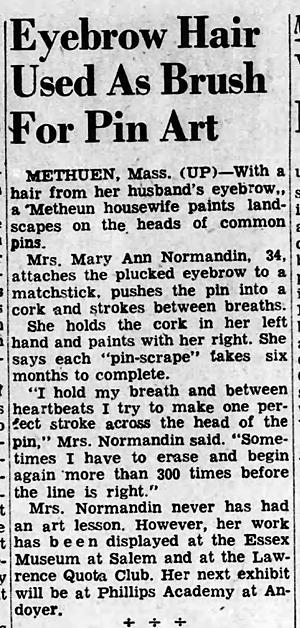
Asheville Citizen Times - Nov 30, 1952

Boston Globe - Nov 11, 1953
Apparently she completed four pinhead paintings — the Old Man of the Mountain, an Egyptian pyramid, an autumn scene, and a lighthouse — then she gave it up because it was too emotionally and physically demanding. A 1977 article about her work in the Boston Globe offered some details:
"I started each one of those paintings about 500 times before I finally got it perfect. It wasn't a simple task..."
Her brush was a hair from her husband's eyebrow, which she still keeps in a small container.
"I would paint one thin line, then let it dry," she explained. "Then go on to the next line. The slightest mistake or wrong movement, and the painting was ruined. You'd have to wipe the pinhead clean, and start all over again."
"I completed four paintings, and tried a fifth. It was supposed to be Lincoln, but the paint blistered, and Lincoln ended up looking like Foodini The Magician, a character they had on television years ago."
"You know, I have a nightmare every once in a while. In it, one of my pins is dropped on the floor and rolls into a crack, and I'm unable to find it."
Posted By: Alex - Mon Nov 09, 2020 -
Comments (4)
Category: Art, 1950s
Artwork Khrushchev Probably Would Not Have Liked 29
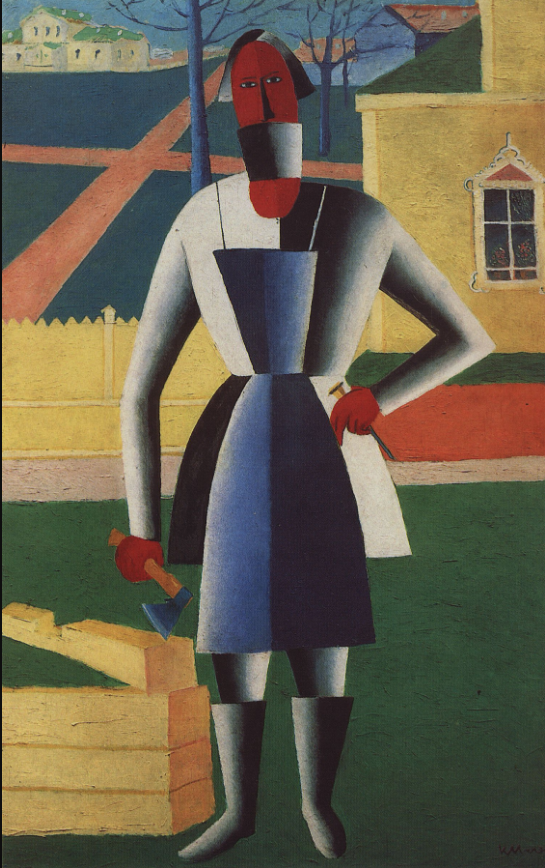
"Carpenter," 1927, Kazimir Malevich.
The artist's Wikipedia page.
His complete works here.
Posted By: Paul - Sun Oct 18, 2020 -
Comments (2)
Category: Art, Avant Garde, 1920s, Russia
Sing along with Khrushchov coloring book, an update
Eight months ago I posted about a coloring book published in 1962 titled The Sing Along with Khrushchov Coloring Book. I noted that, although I had come across references to the book in newspapers, I hadn't been able to find any images of it online. Nor were there any used copies for sale. And only two libraries in the U.S. had copies of it. It was really obscure!But I was just contacted by Elaine Woodward who revealed that her grandfather, who was on the American Hungarian Federation in DC, had once given her a copy, which she still had. She was kind enough to scan it and send it to me. So here it is, rescued from obscurity!
I've posted two sample images below. Or click here to read the whole thing (pdf file).
Note that the book spells Khrushchev with an 'o' rather than an 'e'... so the title was misspelled in my original post.
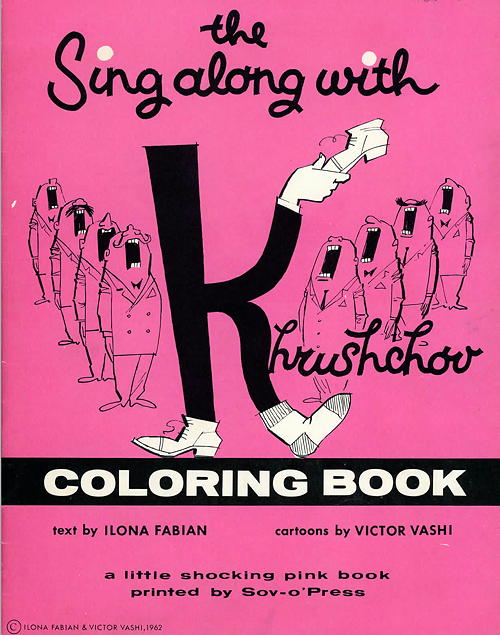
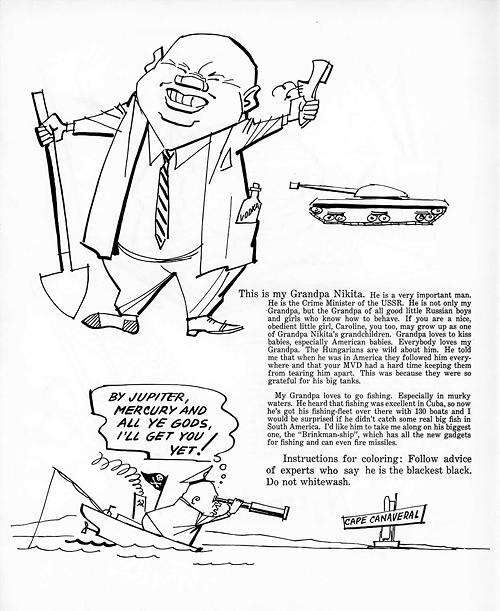
Posted By: Alex - Mon Oct 12, 2020 -
Comments (4)
Category: Art, Dictators, Tyrants and Other Harsh Rulers, Politics, Books, 1960s
Elmina
Elmina is a West African film, released in 2010, about a Ghanaian farmer "fighting corruption and the exploitation of the community by a Chinese multinational corporation."What makes the movie odd is that the lead role of the farmer, in an otherwise all Ghanaian cast, is played by artist Doug Fishbone who's a self-described "white Jewish man from New York." Furthermore, no one in the movie ever makes note of the fact that he's white and everyone else is black.
Fishbone notes on his website: "No reference is ever made to this oddity of casting, which in a quietly radical way completely overturns conventions of race and representation in film, and offers a new perspective on globalization, neo-colonialism, Eastern influence in Africa, and the relativity of audience engagement."
Doug Fishbone: Elmina (2010) Film Trailer from Doug Fishbone on Vimeo.
Posted By: Alex - Tue Oct 06, 2020 -
Comments (3)
Category: Art, Movies
Dickens 44 Bascom, Glue Artist
Dickens 44 Bascom is a "glue artist" or "gluer" who rose to prominence in the 1960s. One of his most famous pieces was a 1961 Ford Falcon to which he glued just about everything you could imagine: a typewriter, toilet seat, toys, Donald Duck, and other "relics of our civilization". It was one of the first cars ever decorated in this fashion (perhaps the first). He used to earn money by parking it on a busy street and collecting donations from passersby.Later he hatched a dream of building an entire castle from glued-together stuff. But, as far as I know, his castle project never came to fruition.
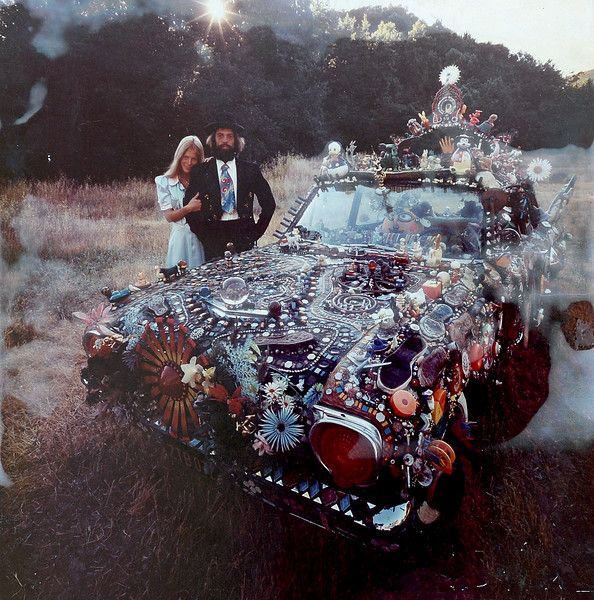
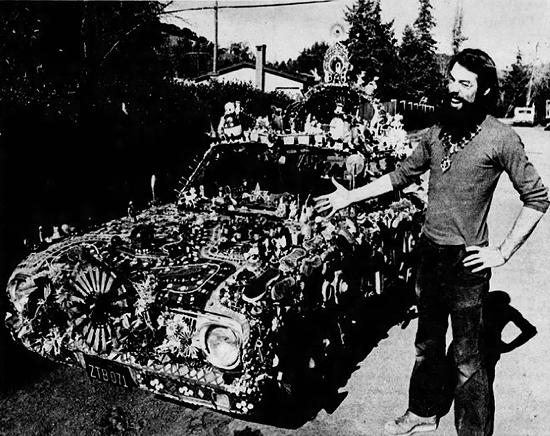
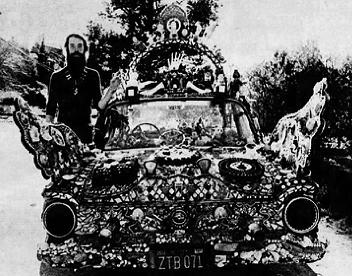
Pittsburgh Press - Mar 3, 1974
According to the Marin Independent Journal, Bascomb left the US in 1981 and lived abroad for almost four decades, in a kind of self-imposed exile, before returning a few years ago. As of 2018, he was living in a motel in San Rafael.
His middle name, "44", was given to him by his father because he was born 44 minutes after 4 am on the 44th day of 1944. (I'm sensing a recurring theme of artists with numbers for middle names, since we recently posted about Nancy 3. Hoffman who operates the Umbrella Cover Museum in Maine).
More info: Dickens44.com
Posted By: Alex - Sat Oct 03, 2020 -
Comments (2)
Category: Art, Outsider Art, Cars
The Rainbow Swash
1971: Boston Gas commissioned artist Corita Kent to decorate a gas tank next to the I-93 in South Boston. Her design featured a series of rainbow-colored stripes. But once her artwork was done, people began to claim that they could see the bearded silhouette of Ho Chi Minh in the blue stripe. The suspicion was that Kent, being an anti-war activist, had purposefully put it there. Kent always denied this.More info: The Boxer Boston
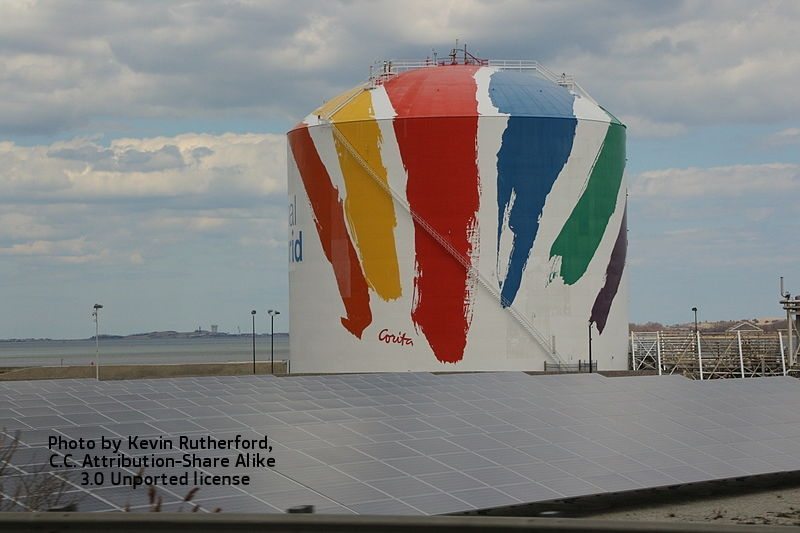
Now here, brightening drab and messy industrial surroundings, is something we would call "magnificent and fitting." But some people, alas, were upset. In Corita's free-flowing brush strokes, they professed to detect the profile of Ho Chi Minh. The mayor of Quincy, Mass., in fact, declined an invitation to attend the dedication of the rainbow colored gas tank on the grounds that he did not want to pay "homage of any nature to a communist."
Corita just laughed. "Some people see faces in the clouds," she said.
— The Montgomery Advertiser - Feb 3, 1973
Posted By: Alex - Thu Oct 01, 2020 -
Comments (2)
Category: Art, Delusions, Fantasies and Other Tricks of the Imagination, 1970s
The Return of Pipilotti Rist
Longtime WU-vies will recognize the name of this artist, since we've been covering her almost since the blog commenced. Now, late to the party, THE NEW YORKER has discovered her "genius."Let us savor one of Rist's newer works, posted to YouTube in November 2019. Don't let the fact that its views number in the low double digits dissuade you from its worth!
Posted By: Paul - Mon Sep 14, 2020 -
Comments (2)
Category: Art, Avant Garde, Ineptness, Crudity, Talentlessness, Kitsch, and Bad Art, Magazines, Europe
Nocturnal Butterflies
Posted By: Paul - Thu Sep 10, 2020 -
Comments (0)
Category: Art, Surrealism, Cartoons, 1990s
Infinity Kisses
The artwork Infinity Kisses, by Carolee Schneeman, consists of multiple self-shot photos of her kissing her cat. (See video below). She worked on it from 1982-1988.After she completed this work, it evidently didn't receive much attention from the art world, because in a 1991 essay, published in Art Journal (Winter 1991), she complained of its neglect:
As it turned out, Infinity Kisses was acquired and put on display by the San Francisco Museum of Modern Art in 1993. So, that was good news for Schneeman.
But now I'm thinking that the art world has been unfairly ignoring my pictures of my cat. This might be censorship!

My cat, Pumpkin
Posted By: Alex - Tue Sep 08, 2020 -
Comments (1)
Category: Art, Censorship, Bluenoses, Taboos, Prohibitions and Other Cultural No-No’s, Cats
Willem de Kooning toilet seat
By the mid-1980s, works by Willem de Kooning were fetching over a million dollars. So when James Garcia and Joseph Lada found a three-hole outhouse seat stored in their basement that apparently had been painted by de Kooning, they figured they had a potential masterpiece on their hands. De Kooning's wife confirmed he had painted the toilet seat "very fast" for a croquet party in 1954. He had been trying to make the wood look like marble.The sale raised the question: was this really art? Some said no. Others, such as de Kooning's friend John MacWhinnie, argued that, "It's a youthful, exuberant example of the painter at the height of his abstract expressionism... In spite of itself, it became art, simply out of a choice the de Kooning made."
It ended up selling for $50.
More info: Baltimore Sun
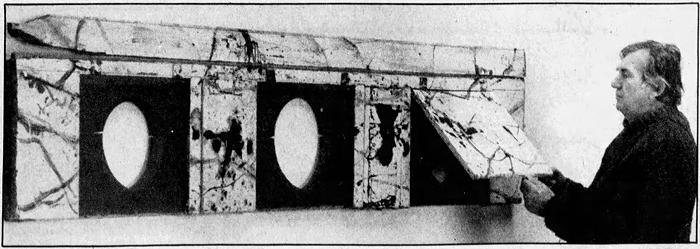
Tampa Bay Times - Feb 3, 1985
Posted By: Alex - Fri Aug 28, 2020 -
Comments (1)
Category: Art, 1980s

| Who We Are |
|---|
| Alex Boese Alex is the creator and curator of the Museum of Hoaxes. He's also the author of various weird, non-fiction, science-themed books such as Elephants on Acid and Psychedelic Apes. Paul Di Filippo Paul has been paid to put weird ideas into fictional form for over thirty years, in his career as a noted science fiction writer. He has recently begun blogging on many curious topics with three fellow writers at The Inferior 4+1. Contact Us |




